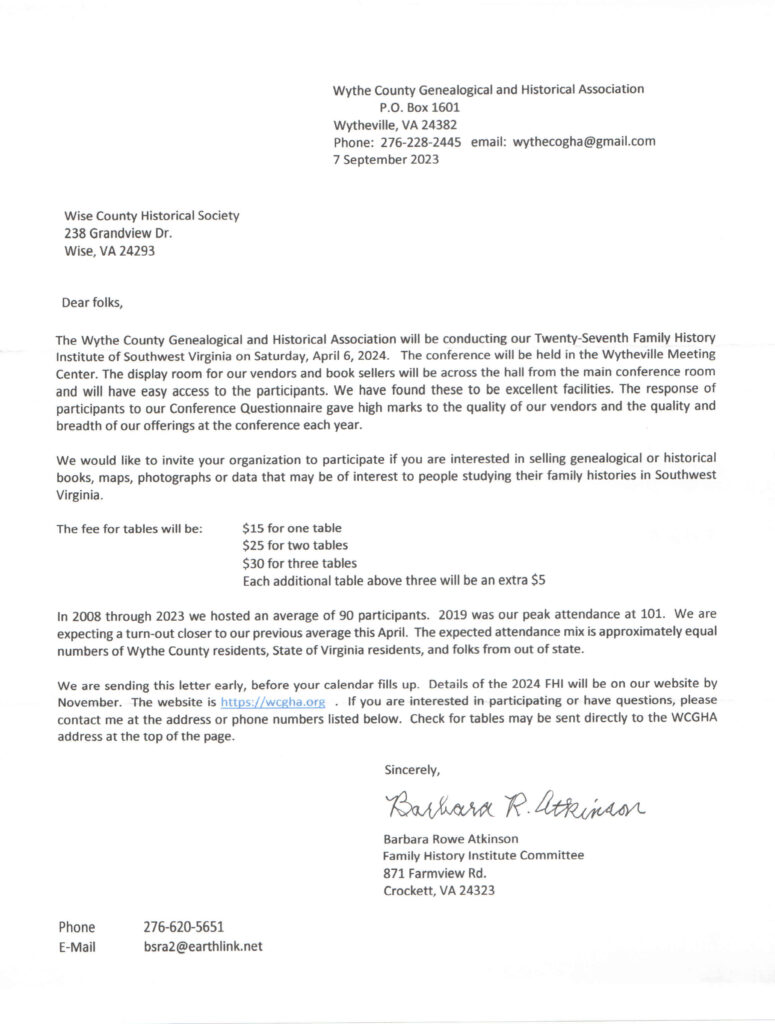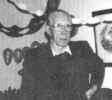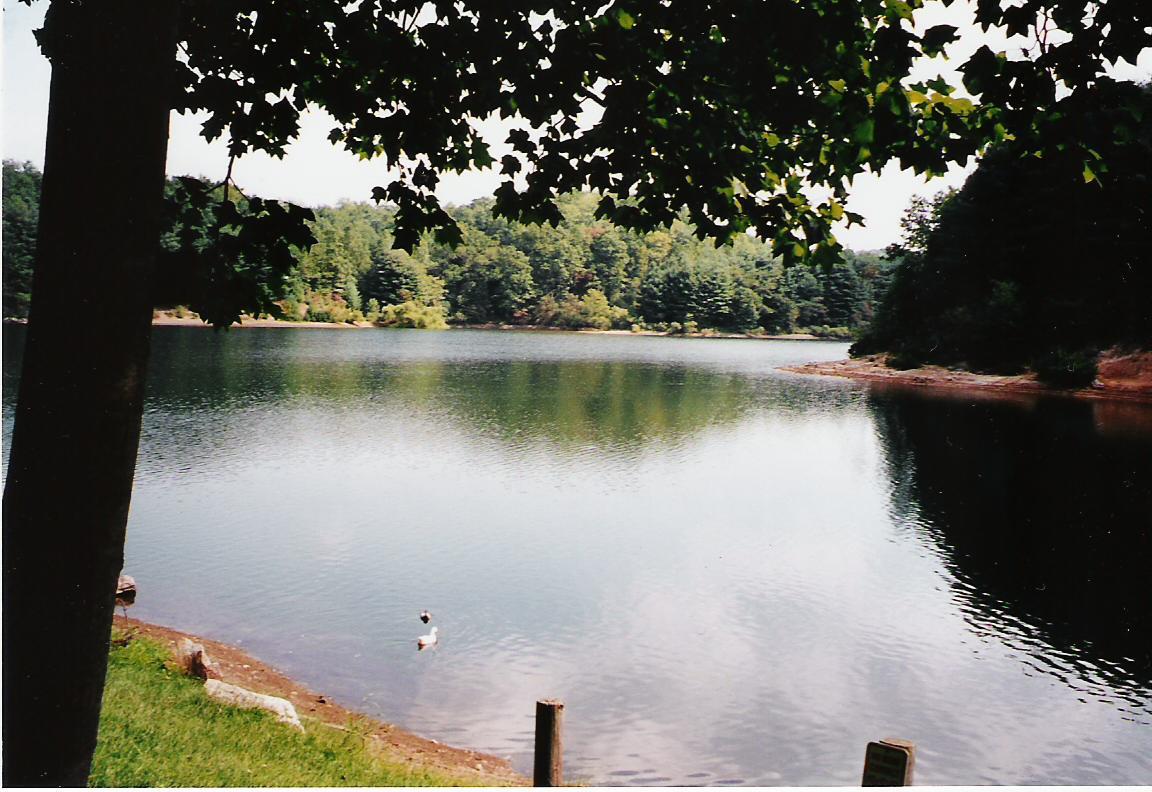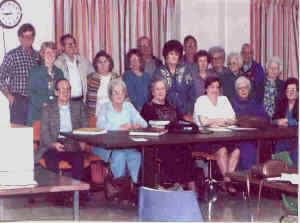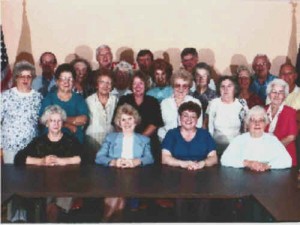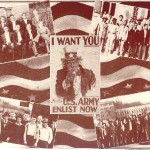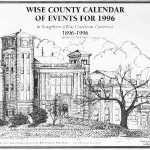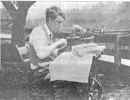Category: Wise County VA History
New Location
The Wise County Historical Society is now located in the lower level of the Wise County Public Library.
Twenty-Seventh Family History Institute of Southwest Virginia
OBITUARIES
Counties in Virginia and How They Were Formed
- Orange – 1734-1738
- Frederick – formed from Orange 1738-1772
- Augusta – formed from Frederick 1738-1770 – Organized in 1745
- Botetourt – formed from Augusta 1772
- Fincastle – formed from Botetourt 1772-1776
- Montgomery – was formed from Fincastle 1776
- Washington – formed from Fincastle in 1776
- Kentucky – from Fincastle 1776-1780
- Smyth – from Washington 1832
- Tazewell – from Washington 1799
- Russell – from Washington 1786
- Buchanan – from Washington 1758
- Scott – from Washington 1814
- Lee – from Washington 1792
- Wise – from Lee, Scott and Russell 1856
- Dickenson – from Wise, Buchanan & Russell 1880.
Originally, all the land belonging to Virginia west of the Blue Ridge was embraced in the County of Orange. In 1738, Orange county west of the Blue Ridge was divided into two counties, Frederick and Augusta; and Augusta included the territory now comprising Wise. In 1769, Augusta County was divided and all the land southwest from Lexington was called Botetourt County, named in honor of the then governor of Virginia, Lord Botetourt; and all the extreme southwestern portion of the State as well as the whole state of Kentucky was then in Botetourt County. Later Botetourt County was divided and Fincastle County, including all the Western Portion was cut off. In 1777, Fincastle in turn was divided into three counties, Montgomery, Washington, and Kentucky. Washington County, Virginia, is said to have been the first political unit ever named in honor of George Washington. From Washington County were formed the following counties: Russell in 1786, Lee in 1792, and Scott in 1814. Wise County was formed by taking parts of Russell, Lee and Scott Counties. It had been estimated that the new county of Wise had but 3 percent of its land under cultivation; the remainder was in wilderness.
The above was taken from the book, , by Luther F. Addington.
I would like to add that Dickenson County, “Virginia’s Baby” was taken from Wise, Russell and Buchanan Counties and named after W. J Dickenson. (F.S.)
Emory L. Hamilton
Memorial Tribute
by Rhonda Robertson
Emory L. Hamilton, born April 10, 1913 in Wise County and christened Emory Lee; he was the son of Jessee and Sarah Baldwin Hamilton. His love of history began at the feet of his
parents, aunts, uncles and grandparents listening to stories of his ancestors told around the fireplaces and porches of Wise County. Emory was a descendant of the earliest of pioneer families having settled on the frontiers of Southwest Virginia.
He often told of himself and his younger brother, J. B., studying by candlelight in the loft of their old log house in the community known as Hamilton Town. They poked holes in the daubing in the walls and roof so they could lie in their beds beneath feather ticks and look at the stars glinting in the dark sky. Beautiful as this was there was a drawback, and he laughingly told that in winter the snow would sift down through the openings and softly fall on them, making them keep their heads under the cover all night because they didn’t dare tell their parents what they had done.
Emory L. Hamilton
Memorial Tribute
by Rhonda Robertson
Emory L. Hamilton, born April 10, 1913 in Wise County and christened Emory Lee; he was the son of Jessee and Sarah Baldwin Hamilton. His love of history began at the feet of his
parents, aunts, uncles and grandparents listening to stories of his ancestors told around the fireplaces and porches of Wise County. Emory was a descendant of the earliest of pioneer families having settled on the frontiers of Southwest Virginia.
He often told of himself and his younger brother, J. B., studying by candlelight in the loft of their old log house in the community known as Hamilton Town. They poked holes in the daubing in the walls and roof so they could lie in their beds beneath feather ticks and look at the stars glinting in the dark sky. Beautiful as this was there was a drawback, and he laughingly told that in winter the snow would sift down through the openings and softly fall on them, making them keep their heads under the cover all night because they didn’t dare tell their parents what they had done.
When Emory graduated from high school there weren’t many opportunities for young men in Wise County so he traveled to New York to study navigation with the Merchant Marines. It was while living in New York and working on board the Merchant ships that the Depression came and everyone lost their jobs causing his return home to Wise. He worked odd jobs until he applied for and was accepted by the WPA. his assignment was to document and record the early settlements of Wise County. The only problem was that his investigation and recording of these settlements was limited by how far he could walk or with whom he could hitch a ride. The assignment only fueled his love of history and from this work came his manuscripts of Indian Atrocities Along the Clinch, Powell and Holston Rivers, The Early Frontier, Early Settlements and Early Houses. In addition to the hundreds of articles that appeared in various publications ad local newspapers.
After his enjoyable work in the WPA, World War Ii came and Emory enlisted in the Army Air Corps on January 14, 1941 at Roanoke, VA and trained as an Administrative Specialist, being promoted to Technical sergeant in the 3539th Base Unit. He transferred on January 23, 1942 to Australia, and then on to the battles and campaigns of New Guinea and the Northern Solomons.
Emory related that it was so hot everyone had to sleep outside at night n hammocks strung between the trees. These hammocks were covered with netting that not only served to keep out the mosquitoes, but he also told that at night, things would fall out of trees onto the netting and roll onto the ground. Those things were snakes! Emory reenlisted in the 309th Army Air Force at Greenville, South Carolina on November 19, 1945 and was discharged from the service on January 11, 1947 in Greenville. He might have made a career out of military service, but he returned to care for his widowed mother.
When Emory returned home he worked for several years in the County Circuit Court Clerk’s office until a position opened in the Wise County Vocational School where he taught sheet metal and drafting until his retirement. Many are the men who took drafting and sheet metal under his tutelage.
Emory was a founding and charter member of the Historical Society of Southwest Virginia and served as its secretary for 30 years before giving up the position due to ill health. Emory answered hundreds of letters and phone calls each month from people searching out their family genealogy and the early history of Southwest Virginia. Had Emory lived to see the beginning of the Wise County Historical Society he would have been one of its most avid supporters and would have been in the office daily to answer questions and help out. He took great enjoyment in helping people in their quest and was a fount of knowledge which is sorely missed and cannot be replaced.
From his love of history came his passion for antiques and he had a most impressive collection of porcelain mustache cups and pattern glass pitchers and creamers. His pitchers and creamers are on display at the lonesome Pine Regional Library.
Along with his keen interest in history and genealogy, he also had a great interest in astronomy and harbored a secret desire to have been an archaeologist.
Emory contracted cancer of he lung, which recurred after a short remission and passed away on November 3, 1991 while hospitalized in Kingsport, Tennessee. He is buried by his mother and father in the Wells Cemetery in Esserville, VA
I Like to think of him like Indiana Jones, in a leather jacket with a battered fedora, turning to doff his hat in goodbye as he prepares to stride off to a new adventure.
Memorial Tribute to Emory Hamilton
by Rhonda Robertson
Do Not Stand At My Grave and Weep
Do not stand at my grave and weep,
I am not there, I do not sleep.
I am a thousand winds that blow,
I am the softly falling snow,
I am the gentle showers of rain,
I am the fields of ripening grain.
I am in the morning hush,
I am in the graceful rush,
Of beautiful birds in circling flight,
I am in the starshine of the night.
I am in the flowers that bloom,
I am in a quiet room,
I am in the birds that sing,
I am in each lovely thing.
Do not stand at my grave and cry,
I am not there, I do not die.
Mary E. Frye
1932
Photos of the Guest River Gorge
The Guest River Gorge is one of Wise County’s natural wonders. The Guest River plunges through a canyon carved through Stone Mountain as it flows to join the Clinch River. Rails to trails project that follows an old railroad right of way paralleling the Guest River, a Virginia Scenic River. Trout fishing is permitted in the river, as well as kayacking and canoeing.
During the early 1900’s when timber and coal were being hauled out of the remote areas of Dickenson County, this passage was used as a rail line.
The history of the Gorge shows that millions of years ago the Guest River eroded a passage through Stone Mountain on its way to join the Clinch River. Cutting through massive rock, it opened a deep rock corridor that is a scenic wonder. Many other curiosities exist along the six mile trail, including an old railroad tunnel, bridges using the remaining railroad trestles, waterfalls and rock outcroppings.
Located in the G.W/Jefferson Forest near Coeburn, Virginia.
The Trail was officially dedicated [intlink id=”251″ type=”post”] [/intlink] in 1994, after the N-S Railroad had abandoned the railbed and donated the land to the Forest Service. The railway had originally hauled coal. Coal and saltpeter were mined near the gorge – coal for heating and smelting, and saltpeter for gunpowder manufacturing.
Native Americans occupied areas in and around the gorge for hunting, fishing and implement making from about 9000BC to the mid18th century.
The Forest Service manages the Guest River Gorge area as a Special Area. The 5.3 mile section of the Guest River is designated as a State Scenic River.
Bicyclists, hikers and runners are invited to use the trail. Along your walk, there are numbered signposts indicating points we think you’ll find interesting:
Swede Tunnel – constructed in 1922
Cliff line – Rocks in this and the other cliffs are about 300 million years old.
“Big Shot” – This section came to be called “by that name because it took a lot of explosives to get through the cliffline during constructing.
Vista – This is one of several scenic spots on the Guest River Gorge Trail.
The Culvert
Concrete retaining wall
The Guest river-Clinch River Confluence – The rivers join here
Information: The National Forest Service; Clinch Ranger District
Hikers, Fishermen, kayakers, canoeists and bicyclists are invited to the Gorge to enjoy the beauty of the scenery, and the seeming isolation from the rest of the world.
Bear Creek Lake and Recreation Area
Bear Creek Lake and Norton Reservoir
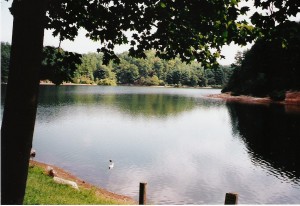
Located in Wise on Wise Mountain road
Stocked with Trout.
There is also Bass, Carp, Catfish, and Bluegill
There is a shelter with tables and bathrooms are available
Children’s Day is held once a year-Fishing, food, and prizes are given.
Norton Reservoir
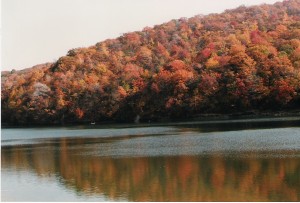
Located near Flag Rock Recreation Area
This lake is stocked with Trout
$10,000.00 tagged “Benge” fish contest each year
Norton Reservoir – Fall & Summer
Formation of the Wise County Historical Society
Wise County Heritage Book Committee and members in attendance
Front r l-r: Paul Kilgore, Esther Congo, Fannie Steele, Rhonda Robertson, Sue Gilliam, Nina Mullins.2nd. r, l-r: Dorothy Witt, Evelyn Slemp, Sandra Collins, Shirley Gray, Edith Hubbard, Beulah Hawk, Gladys Stallard3rd. r, l-r: Bill Gobble, Ed Blair, Denver Osborne, Blaine Sturgill, Mr. & Mrs Tilford Nourse.
The Wise County Historical Society was organized on August 13, 1992 with the following Officers and Board of Directors elected. Dorothy Hall Witt, President; Wanda May Rose, Vice President; Rhonda Robertson, Secretary; Sue Stewart Gilliam, Treasurer; Gladys J. Stallard, Historian; Evelyn Dale Slemp, Publicity Chairman; Dollie Opal Watson, Appalachia; William C. Gobble, Big Stone Gap; Billy R. Porter, Coeburn; Gladys J. Stallard, Norton; Betty Belcher, Pound; Leroy Hilton, St. Paul, and Esther Congo, Wise.
Other charter members include: Loretta Belcher, William Belcher, Dora Alice Blevins, Nancy Baker Brown, Dorthula Carroll, Sandra Wright Collins, Dollie W. Countiss, Don and Sandy Earls, Lillian Gobble, Beth Holding Hagan, Martin Hagy, Pauline Hagy, Charlene Hamilton, Bill Hendric, Edith Gardner Hubbard, Ben & Cornie Julian, Elsie Vandiver Kern, Paul Kilgore, Ganell Marshall, Louise Adams Minor, H. Ronnie Montgomery, Elzie D. Mullins, Nina Mullins, Rebecca K. McAmis, Violet Kilgore McDonald, Patricia K. Norris, Denver Osborne, Golda Porter, James C. Roberson, Benjamin S. Rose, Fay Sanders, Bruce & Margaret Stallard, Sgt. and Mrs. David J. Stallard, Fannie Lane Steele, Helen J. Stem, Barbara and Roy L. Sturgill, Blaine Sturgill, Phil and Shirley Sturgill, Tim L. Sturgill, William L. Sturgill, William R. Taylor, Ralph Vandiver, Nina Holding Wilson, Ernest J. Benko, Raymond Burgin, Fannie l. Hamilton, D.C. Hubbard, Robert E. Lamb, Jr., Jennifer C. and Samuel E. Rose.
Book Committee and Charter Members Front row. l-r: Wanda Rose, Dorothy Witt, Rhonda Robertson, Sue Gilliam. 2nd. row, l-r: Loretta Belcher, Nina Mullins, Dolly Opal Watson, Sandra Collins, Fay Sanders, Evelyn Slemp, Gladys Stallard, .Third row, l-r: Paul Kilgore, Louise Minor, Esther Congo, Elsie Kern, Betty Belcher, Dot Carroll, Bill Porter, Ralph Vandiver, Fourth row, l-r: James Roberson, H. Ronnie Montgomery, Bill Gobble
In The Beginning
Dorothy Hall Witt, traveled to Lee County, Virginia, to sit in on their Heritage book committee meetings at the Jonesville Courthouse. She knew that there were two volumes of the Russell County book, and that a group was working on the Scott County history so she was in hopes of a heritage book for Wise County also. Dorothy found that to get started on a possible book for Wise County she must get together a group of people. When this had been accomplished the first meeting was held at the Appalachian Regional Hospital, November 7, 1991 with 14 members present. Officers were elected at that meeting. The committee met at least once a month and sometimes more often. The membership grew in number and with much enthusiasm.
By the summer of 1992, some of the members, especially Dorothy Witt and Wanda Rose, were traveling all over the county spreading the word about the book at fairs, church homecomings, class reunions, and in private homes. The committee held meetings at every town in Wise County with the exception of Norton, in order to reach those who could not come to our regular meetings. Dorothy relates: “It was such a joy seeing old friends again and making new ones. We spent many hours listening to older people tell about how times were when they were growing up in Wise County.”
Some of the members spent countless hours gathering information, photographing pictures, selling ads, proofreading and getting the book ready for the press.
“We were pleasantly surprised to find that so great a number of those born in Wise County have become, not only locally, but nationally and internationally known. Wise County is proud to be the birthplace of Miss America of 1993, Leanza Cornett, and also the National Easter Seal Poster person for 1993, Virgil Craft of Wise who has contributed much to this book.”
From November 1991, our committee grew to sixty interested persons, culminating in the organization of the Wise County Historical Society in August, 1992, with 61 charter members.
- In 1993 THE HERITAGE OF WISE COUNTY AND THE CITY OF NORTON, VOL. 1 rolled off the press.
A beautiful book, forest green with gold lettering, hardback, 9 x 12 and contained 515 pages. We were proud to now have our own Wise County Heritage book. The Heritage of Wise County and City of Norton 1856-1993

August,1994, a meeting was held to elect new officers and members of the Board of Directors, held at the office of the Historical Society. They are as follows: Chairman: William C. Gobble; Vice Chairman: Denver C. Osborne; Recording Secretary: Rhonda Robertson; Corresponding Secretary: Dorothy Witt; Treasurer: Wanda Rose; Historian: Gladys Stallard
Members of the Board of Directors:Appalachia: Dolly Opal Watson; Big Stone Gap: Dot Carroll; Coeburn: Bill Porter; Norton: Paul Kilgore; Pound: Blaine Sturgill; St. Paul: Leroy Hilton; Wise: Fannie Steele. Since this election, some new officers and members of the board, have been installed and others are no longer with us.
We were given office space in the courthouse. and In 1994 the Heritage book was reprinted. In that same year we obtained office space in room 250 of the courthouse, which is our present location.
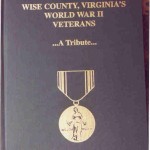 One of most exciting projects of the Wise County Historical Society was spearheaded by Rhonda Robertson and Wanda Rose. This was putting together WISE COUNTY VIRGINIA’S WORLD WAR II VETERANS: A TRIBUTE. The book contains 929 pages, with over 6,000 veterans sketches and over 3,000 photos. Rhonda and Wanda spent several thousand hours typing, copying photos and preparing the book for publication. It was a momentous event when the books arrived on August 15, 1995, the 50th anniversary of V-J Day. This book was submitted to Tom Brokaw of NBC news during his series of “Home of the Brave” broadcasts about WWII. It was also placed in the Library of Virginia, and other libraries.
One of most exciting projects of the Wise County Historical Society was spearheaded by Rhonda Robertson and Wanda Rose. This was putting together WISE COUNTY VIRGINIA’S WORLD WAR II VETERANS: A TRIBUTE. The book contains 929 pages, with over 6,000 veterans sketches and over 3,000 photos. Rhonda and Wanda spent several thousand hours typing, copying photos and preparing the book for publication. It was a momentous event when the books arrived on August 15, 1995, the 50th anniversary of V-J Day. This book was submitted to Tom Brokaw of NBC news during his series of “Home of the Brave” broadcasts about WWII. It was also placed in the Library of Virginia, and other libraries.
In addition to the Veteran’s book, a commemorative calendar of Wise County during World War II was published containing pictures and historical events of the War and of the county.
In June of 1996 the first issue of our historical magazine, “The Appalachian Quarterly,” debuted. Rhonda Robertson is the editor, Ganell Marshall, associate editor. The magazine is published four times a year and contains exciting articles on our region and the southern Appalachians. The subscription was $10.00 per year for several years, but with rising costs of postage and paper, we had to raise the price to $12.00 per year. The subscription includes a years membership with the historical society.
The Wise County Historical Society welcomes you to join the membership and join in our activities. It is hard work but great fun.
The Courthouse Centennial was approaching fast and the society got busy planning their Courthouse Centennial (1896-1996) calendar. The calendar contained upcoming events in Wise County in 1996 as well as several old pictures of Wise and other towns in Wise County. That same year, the society reprinted the Banner Community Heritage which was compiled by a member of the Historical Society, Bill Porter.
The next project for the Historical Society was assisting Denver “Bud” Osborne in the publishing of his famous book, WISE COUNTY’S APPLE BLOSSOMS OF YESTERYEAR.
The  book is a precise history of the apple industry in Wise County. The book committee consisted of people in Wise county who owned or had interest in apple orchards. Wise County was once noted for its unique delicious apples. In 1945 Wise county produced 300 thousand bushels. The beautiful apple blossom cover for this book was taken of our member and co-workers Fannie & Letcher Steele’s apple orchard.
book is a precise history of the apple industry in Wise County. The book committee consisted of people in Wise county who owned or had interest in apple orchards. Wise County was once noted for its unique delicious apples. In 1945 Wise county produced 300 thousand bushels. The beautiful apple blossom cover for this book was taken of our member and co-workers Fannie & Letcher Steele’s apple orchard.
Apple Blossoms of Yesteryear

In 1997 the historical society started planning for THE HERITAGE OF WISE COUNTY AND THE CITY OF NORTON, VOL. 2. The book was published in 2001. This book is distinct from Volume 1, but has the same forest green coloring with gold lettering, hard back It has 1133 pages including the index and is 9 x 12 in size. The many hours of hard work that went into this book is tremendous. This book is filled with stories and illustrations about Wise County and its people. Another heritage book of which the Wise County Historical Society is very proud.
Heritage of Wise County and the City of Norton 1856-2001 Vol. 2
The Historical Society has set headstones to mark the graves for 37 Civil War Soldiers of Wise County who had no stones or deteriorated ones.
Lillian Gobble and Rhonda Robertson are instrumental in locating and erecting stones for Wise County’s Civil War soldiers and spends hours documenting their service and ordering stones from the Veteran’s Administration.
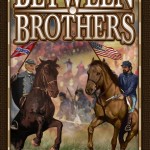 The next undertaking for the Historical Society is now in the works, thanks to Rhonda Robertson and Lillian Gobble, who is working on a Civil War book for Wise County. The book is near completion and should be off the press sometime next spring. This book will be a wonderful asset to the Historical Society and to Wise County.
The next undertaking for the Historical Society is now in the works, thanks to Rhonda Robertson and Lillian Gobble, who is working on a Civil War book for Wise County. The book is near completion and should be off the press sometime next spring. This book will be a wonderful asset to the Historical Society and to Wise County.
Note: Between Brothers, Civil War Soldiers of Wise and Dickenson Counties, A Biographical History, was available in June of 2004 and is a popular item at the Historical Society office.
In May of 2000, the Society sponsored its first Family History Days on the lawn of the courthouse, where people came to swap family information with genealogists and members of the Historical Society. The family History Days proved to be so successful, that Family History Days, number 2 was held this year 2002, and another is planned for 2003 which will be a Civil War theme.
The Society has worked with school students in helping them with their family histories, going back several generations for their projects in school.
All the work of the Historical Society is strictly volunteer. The office is open in room 250 at the courthouse, Monday through Thursday from 9:00 A.M. to 4:00 P. M, and on Friday from 9:00 to 12:00 noon. The Society maintains a bookstore in its office at the courthouse in Wise, with hundreds of area and family histories, and records to choose from. It has a database of almost 4000 books, magazines, records, and other articles in its archives. The society works cooperatively with the Circuit Court Clerk’s Office and other county officials to help preserve Wise County history.
The Historical Society has over 1000 members and subscribers to the Appalachian Quarterly. It has assisted thousands of people visiting the county from all over the United States in searching for their roots and other historical facts.
Help us to preserve the history of the area and families of Wise County.
James Taylor Adams and Luther F. Addington
James Taylor Adams was a prolific writer, a folklorist and a preserver of Appalachian culture. He wrote thousands of articles for magazines and newspapers of which only a few have been collected.
James Taylor Adams
At work on his typewriter, outside
James Taylor Adams was a prolific writer, a folklorist and a preserver of Appalachian culture. He wrote thousands of articles for magazines and newspapers of which only a few have been collected.
James Taylor Adams was born February 3, 1892, a son of Joseph and Mary Jane (Short) Adams. He was born in Letcher County, Kentucky and lived in Alum Cove, Little Colley and other small communities in Kentucky.
He moved to Wise County, Virginia while yet a young man. He married in 1908 to Dicy Roberts. They had a family of eight children. Among James Taylor’s work was at the coke ovens in Wise County, selling fruit trees; owned a grocery store; sold insurance, and owned and ran a print shop. He was a Notary and built houses to rent. He also established a post office at Big Laurel where he lived and was postmaster there. His wife Dicy also worked in the post-office. He built a Church house; built and ran a library to store his many books, manuscripts, and publications, and to distribute books for people to read. He also built a museum to collect and preserve antiques and old items.
James Taylor worked in the Works progress Association, (WPA). While working for the WPA he collected old songs and stories of the area and wrote them down to preserve. He became interested in family history and compiled the Adams Family history among others.
James Taylor only had a second grade education in the public schools but was a self educated man. He published several newspapers, some of which was The Vagabond Gazette, Adam’s Weekly and The Cumberland Empire. He wrote columns for several newspapers, and Detective stories for Detective magazines and wrote stories for some Canadian magazines under a pen name of Roland Rivers.
Among the books he wrote was one called “Death in the Dark,” which is a collection of Factual Ballads of American Mine Disasters with historical notes. He also visited cemeteries of the area and compiled a book of the names and dates on the stones, with a short history of some of the people. The book is called, “Family Burying Grounds in Wise County, Virginia.”
He and his wife and family moved to Arkansas to homestead land there, lived in Missouri, then back to West Virginia and finally settled on Rocky Fork at Big Laurel on Rocky Fork. He died in 1954 and is buried at the homeplace there.
MEMORIES by James Taylor Adams
Wild honeysuckles twine around An old log cabin door High on a hill among some pines Above a river’s roar. A winding trail leads down a bluff That’s all aflame with flowers Tis there I wish to take myself And spend life’s evening hours.
A rock is at the water’s edge, A boat is fastened there, I’d loose the chain, take up an oar and row ‘way off somewhere. Then as the sun made silvery gleams, along the crystal stream I’d drop my oar and let’r drift And dream, and dream and dream.
And dreaming I would fail to see, The fish a’leaping high, Nor would I hear the gray-squirrel call A I went floating by. Then when the sun had sank to rest, I’d climb back up the hill, To the little house…deserted now So silent and so still.
Again I’d wander ‘long the trails, As in glad days of yore And hear my Mother calling me… From out the kitchen door. In memory lost…I’d pause awhile Then to the churchyard roam Where I will find the friends I knew Around my childhood home.
Some of the above was taken from: “Family Burying Grounds” by James Taylor Adams;. “About My Father,” by Simpson Randolph Adams; Newspaper article found in a scrapbook purchased at an auction in Russell Co., VA by Denver Osborne.
 Luther F. Addington
Luther F. Addington
By Bonnie S. Ball – Historical Sketches of Southwest Virginia
Luther F. Addington was born near Nickelsville, Scott County, Virginia on September 3, 1899. He was the son of James R. and Nancy (Easterling) Addington. He attended school at Midway and Gate City, Emory and Henry College, and the University of Virginia.
Mr. Addington married Miss Lou Emma Keys on September 25, 1925. He served 42 years as an educator, one year in Scott County, Va., public schools, and forty years in Wise County as a principal. He was also employed for one term as assistant principal at West Palm Beach, Florida. For six years he was principal of Pound High school, and for thirty four years as Principal of the high school in Wise, now known as the J. J. Kelly High School.
He was a member of the Trinity Methodist Church of Wise, the Retired Teacher’s Association, the Appalachian Regional Library Board, and the founder of the Historical Society of Southwest Virginia, of which he served as President for fifteen years. He was Wise County Citizen of the Year in 1956.
He was a historian and writer, having published a history of Wise County, Virginia, and several juvenile books, and numerous articles on the history of Southwest Virginia. He also served as President of Emory and Henry College Alumni Association.
He died on Sunday, February 26, 1978 at the Wise Regional Hospital, following a brief illness. Funeral services were conducted on February 28th at Sturgill Funeral Home Chapel in Wise. Burial was in Glencoe Cemetery, Big Stone Gap, Virginia. The Rev. James Douthat officiated. Survivors include his widow and three brothers; Olin of Kingsport, Tenn., Orville of Abingdon, Va., and Omer of Gate City, Va.
From an Editorial of News Director, Walter Crockett, WCYB-TV, we quote in part:
Mr. Addington was a product of the horse and buggy days, for motor transportation was scarce indeed when he started his career, and he worked with others who dedicated their lives to the education of young people in Wise County.
“Even though a native of Scott County, no one has done more to assemble and preserve the history of Wise County than Mr. Addington. In 1960 the writer attended a conference for authors and journalist of the Southern Appalachians at Berea College in Kentucky. While in the company of E. J. and Mrs. Sutherland we joined Mr. Addington during the lunch hour. It was here that he suggested the idea of a historical society for the southwestern corner of Virginia, which was organized not long afterward. He was unanimously chosen as the first president, and was followed by Judge Sutherland, who declined a second term because of ill health. So Mr. Addington was elected repeatedly until failing health eventually prompted him to withdraw from office. However, he continued to serve in the capacity of an advisor to the Executive Board. While his place as historian may never be filled, his research and labor will remain to aid future historians of the Appalachians.”
